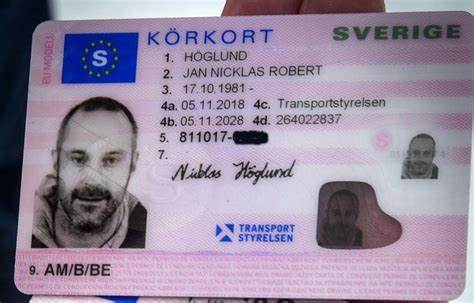댓글 0
등록된 댓글이 없습니다.

Driving is a basic ability for lots of, using the freedom to travel where and when you want, often making life easier and pleasurable. However, getting a driving license is a procedure that needs understanding, perseverance, and adherence to legal treatments. This guide intends to supply a comprehensive summary of the actions one should follow to legally acquire a driving license, highlighting important considerations and regularly asked questions to ensure a smooth and problem-free experience.

Before diving into the application process, it's crucial to understand the basic requirements and kinds of driving licenses available. Driving laws differ significantly from country to nation, and KöPa C KöRkort even within various states or provinces within the very same nation. Generally, there are several types of driving licenses, consisting of:
The very first step in getting a driving license is to investigate the particular requirements in your area. Go to the official website of your local Department of Motor Vehicles (DMV) or equivalent agency to discover comprehensive details about the licensing procedure, consisting of age restrictions, required files, and charges.
Each jurisdiction has its own set of files that need to be sent to obtain a driving license. Frequently required files include:
Lots of states and countries require new motorists to finish a driver's education course. These courses are designed to teach the guidelines of the road, traffic laws, and safe driving practices. They can be completed online or in a classroom setting and frequently include both theoretical and useful components.
As soon as the needed documents is all set and the driver's education course is finished, the next step is to look for a learner's license. This normally involves checking out the DMV or submitting an application online. You will also require to pass a written test that covers traffic laws and driving understanding.
With a student's license, you can start practicing driving under the supervision of a certified grownup. This is a crucial step in constructing your confidence and skills behind the wheel. It's likewise crucial to gain experience in different driving conditions, such as night driving, highway driving, and driving in harsh weather.
After gaining adequate driving experience, you can schedule a driving test with the DMV. The test will examine your capability to securely operate an automobile and follow traffic laws. You will require to bring an appropriately registered and insured automobile to the test, and the examiner will examine your driving abilities on an established route.
If you pass the driving test, you will typically receive a provisionary license. This license might come with constraints, such as a curfew or a limit on the number of passengers you can have in the lorry. These limitations are designed to decrease the risk of mishaps and help new chauffeurs acclimate to the road.
As soon as you have actually held a provisional license for the required period and fulfilled any extra requirements, you can upgrade to a complete driver's license. This process usually involves a basic application and might require a retest or additional paperwork.
A: The minimum age differs by jurisdiction. In the United States, it generally varies from 15 to 16 years of ages. In the UK, the minimum age is 17. Examine your local DMV website for specific information.
A: Some jurisdictions permit you to finish parts of the application process online, such as filling out kinds and scheduling tests. Nevertheless, you will generally need to check out a DMV workplace face to face to send needed documents and take the driving test.
A: If you fail the driving test, you can typically retake it after a specific period. This period varies by location, but it is frequently a few weeks. It's a great concept to practice more before retaking the test to enhance your chances of success.
A: No, a learner's permit usually requires you to be accompanied by a certified adult, normally over 21 years of ages, who is seated in the front guest seat.
A: Yes, the majority of jurisdictions require a vision test to make sure that you can safely operate a vehicle. You can generally take this test at the DMV or with an approved optometrist.
A: The time required to acquire a full driver's license varies depending upon your jurisdiction and the particular steps involved. Normally, it can take several months, consisting of the time needed to complete a driver's education course, hold a student's license, and pass the driving test.
A: It depends on the constraints put on your provisional license. Some provisionary licenses permit you to drive for work, while others may have specific constraints. Inspect your license for information or get in touch with the DMV for explanation.
A: A student's authorization is the very first stage of the licensing procedure and enables you to drive just under supervision. A provisionary license, on the other hand, grants you more driving privileges but might still have some constraints, such as a curfew or passenger limits.
A: No, you usually require a full driver's license before looking for a CDL. A CDL is a specific license that requires extra training and testing, and it is only issued to those who have actually shown the capability to safely run a standard automobile.
A: If you lose your driving license, you ought to report it to the DMV and get a replacement. You might require to provide proof of identity and pay a fee. It's likewise an excellent idea to inform your insurance coverage business and any other appropriate celebrations.
Obtaining a driving license is a considerable turning point that opens new chances and increases independence. By following the steps detailed in this guide and remaining informed about local laws and requirements, you can make sure a smoother and more successful licensing process. Keep in mind that driving is a serious responsibility, and taking the time to learn and practice is vital for your security and the safety of others on the road.
0등록된 댓글이 없습니다.